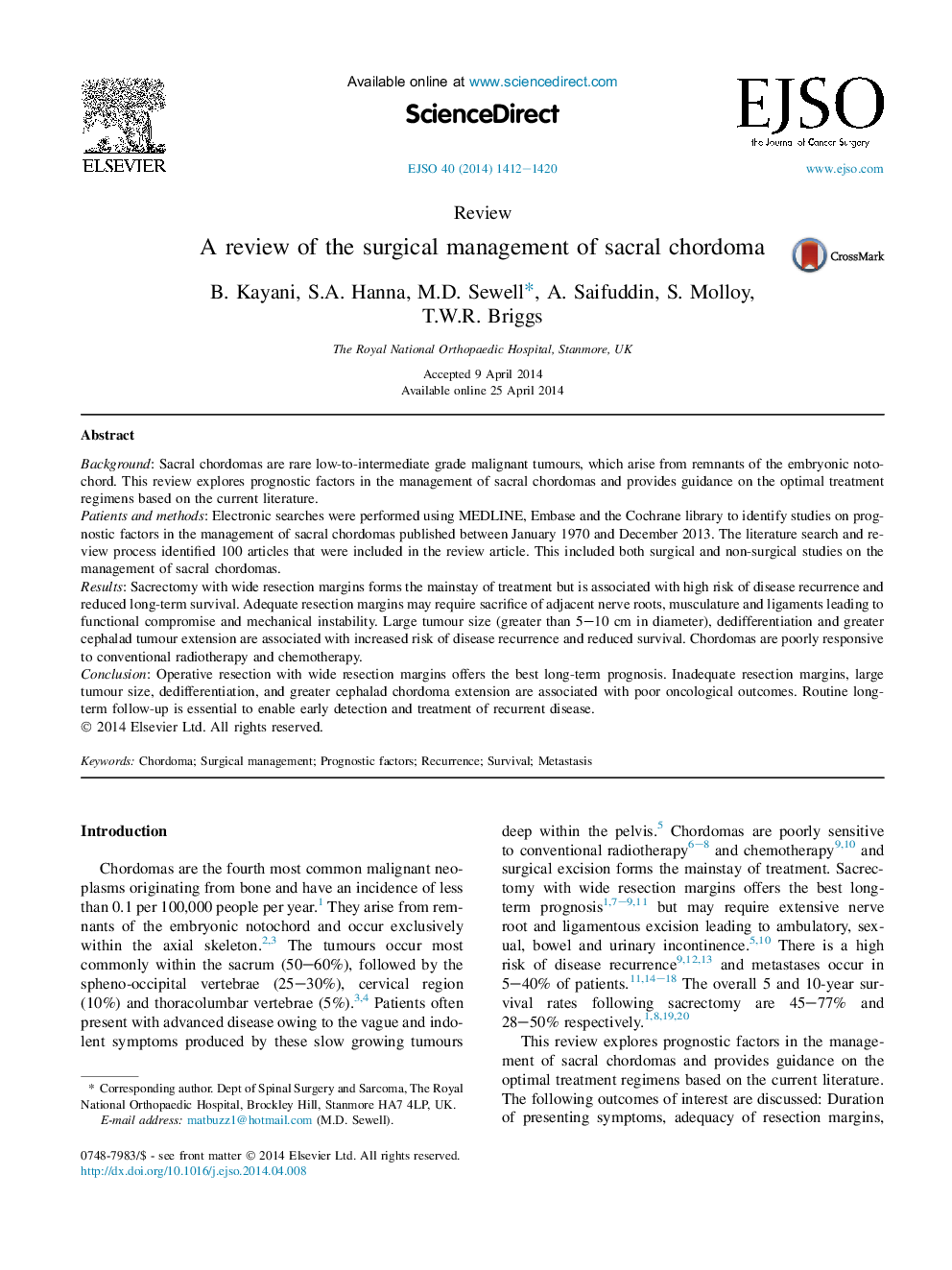| Article ID | Journal | Published Year | Pages | File Type |
|---|---|---|---|---|
| 3984982 | European Journal of Surgical Oncology (EJSO) | 2014 | 9 Pages |
BackgroundSacral chordomas are rare low-to-intermediate grade malignant tumours, which arise from remnants of the embryonic notochord. This review explores prognostic factors in the management of sacral chordomas and provides guidance on the optimal treatment regimens based on the current literature.Patients and methodsElectronic searches were performed using MEDLINE, Embase and the Cochrane library to identify studies on prognostic factors in the management of sacral chordomas published between January 1970 and December 2013. The literature search and review process identified 100 articles that were included in the review article. This included both surgical and non-surgical studies on the management of sacral chordomas.ResultsSacrectomy with wide resection margins forms the mainstay of treatment but is associated with high risk of disease recurrence and reduced long-term survival. Adequate resection margins may require sacrifice of adjacent nerve roots, musculature and ligaments leading to functional compromise and mechanical instability. Large tumour size (greater than 5–10 cm in diameter), dedifferentiation and greater cephalad tumour extension are associated with increased risk of disease recurrence and reduced survival. Chordomas are poorly responsive to conventional radiotherapy and chemotherapy.ConclusionOperative resection with wide resection margins offers the best long-term prognosis. Inadequate resection margins, large tumour size, dedifferentiation, and greater cephalad chordoma extension are associated with poor oncological outcomes. Routine long-term follow-up is essential to enable early detection and treatment of recurrent disease.
